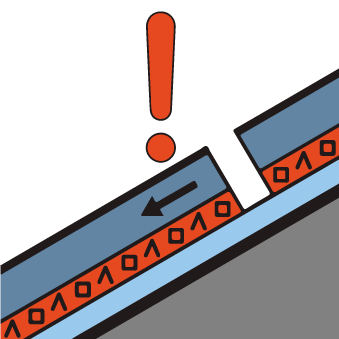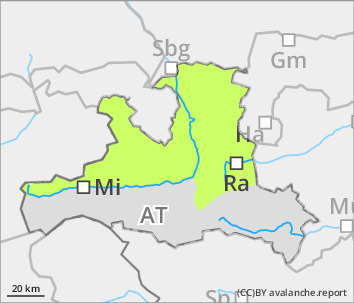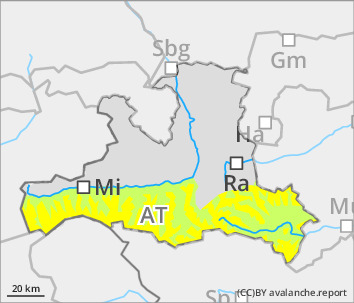
Danger level
 | 2200m |
| 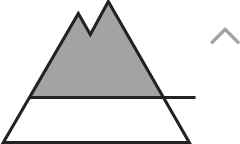 |
| 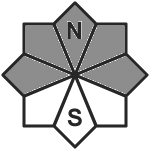 |

In some places, naturally triggered loose-snow avalanches due to solar radiation.
Avalanche danger is moderate above 2200m, below that altitude danger is low. Medium-sized slab avalanches can be triggered by one sole skier in a few steep spots above 2200m. If a fracture occurs it can reach down to more deeply embedded layers in the snowpack and the release grow to medium size. The danger zones are difficult to recognize, occur esp. on very steep north-facing slopes. Caution urged esp. above 2500m on E/W facing slopes. Avalanches in the near-surface drifts remain small-sized. During the course of the day, naturally triggered loose-snow avalanches can be expected in extremely steep south-facing terrain. On steep grass-covered slopes, isolated small glide-snow avalanches are possible in isolated cases.
Snowpack
On shady slopes, 10-20cm of fresh loose snow on the surface, on steep sunny slopes a melt-freeze crust has formed which is often capable of bearing loads. Under that is a melt-freeze crust up to 2400m. Near the crust, faceted crystals have formed. In the lowermost part of the snowpack on shady high-altitude slopes there are faceted crystals near ground level and embedded hoar.
Tendency
Likelihood of snowdrift accumulations triggering will gradually diminish
